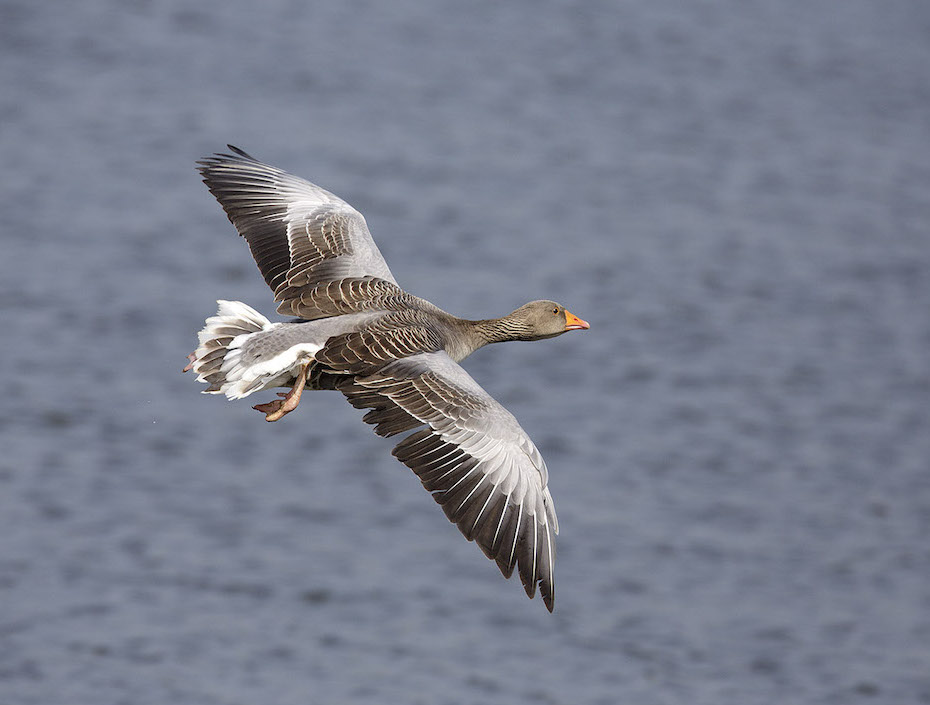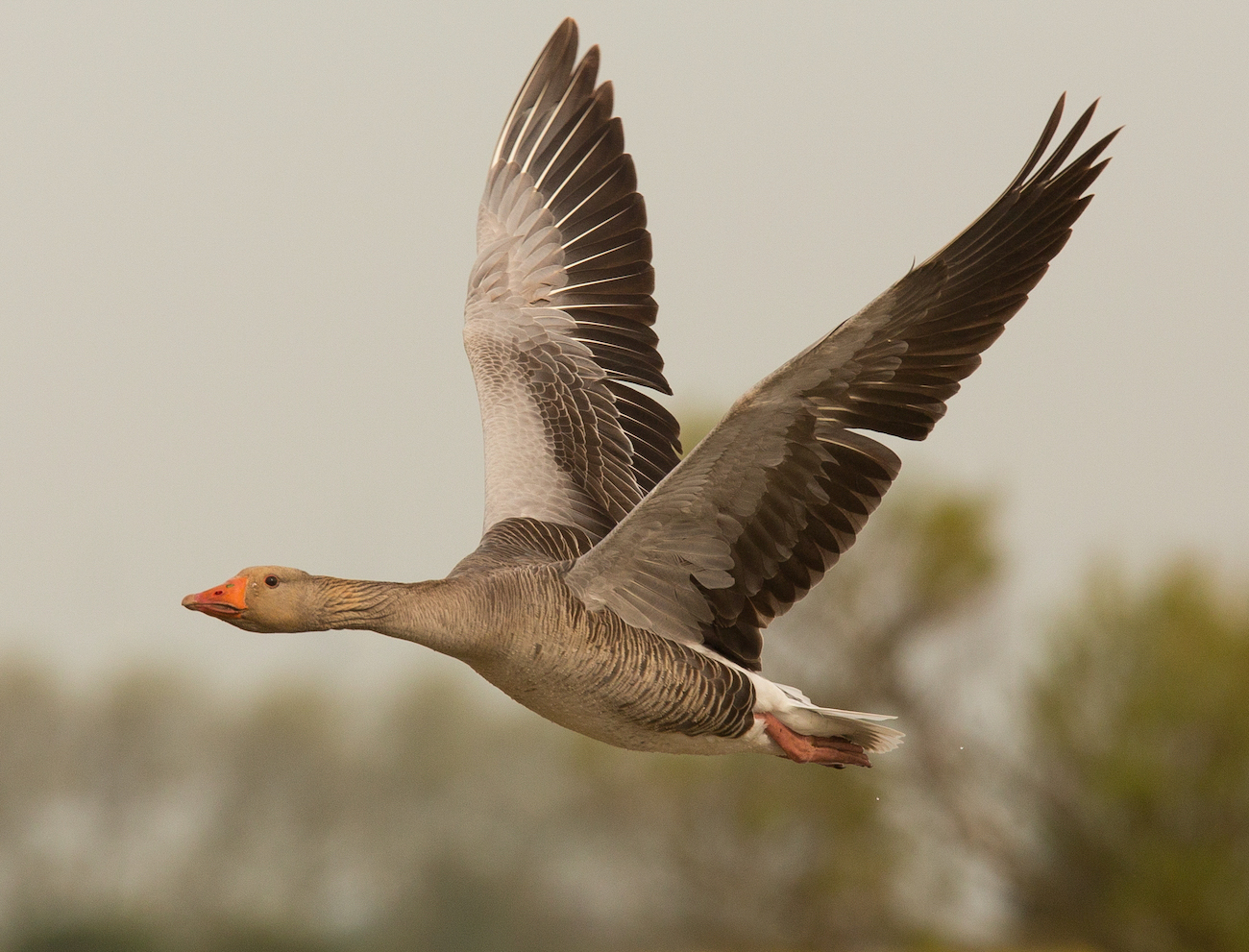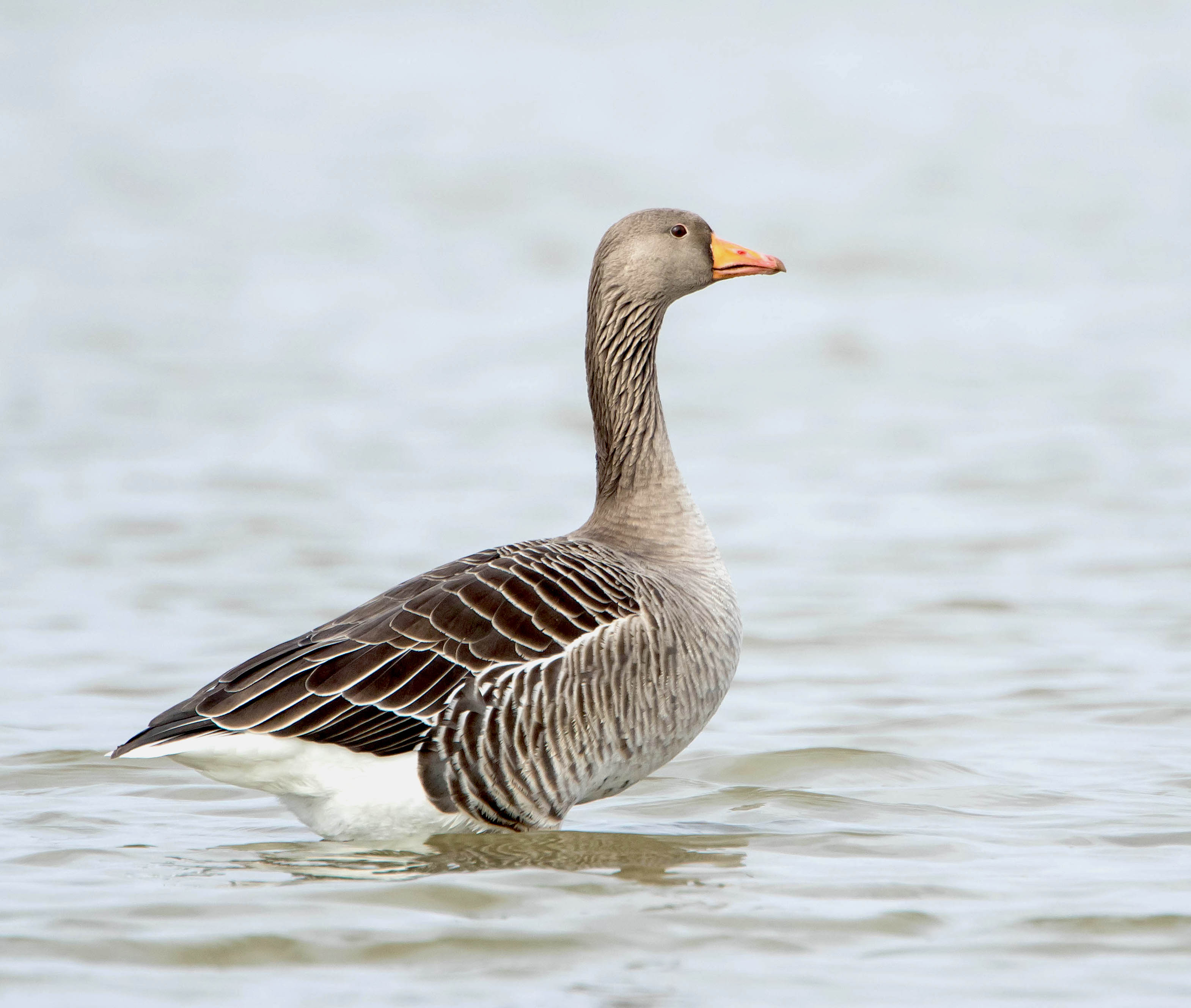Greylag Goose Anser anser
The nominate form is now a common and widespread feral resident. Wild birds from the Scottish population are likely to be scarce but erratic and difficult to detect winter visitors.



Greylag Geese: left, N Lincolnshire April 22nd 2014 (Graham Catley); centre, Huttoft Pit May 10th 2015 (Barry Clarkson); right, Grainthorpe March 20th 2016 (Mark Johnson).
Over the past 40 years the breeding population of Lincolnshire has rocketed upwards from an estimated 200 pairs in the late 1980s to approaching 2000 pairs in recent years, based on the APEP4 methodology. It has overtaken Canada Goose, Branta canadensis and become Lincolnshire's commonest feral goose. Peak winter counts in recent winters across the county have approached 6000 birds with Alkborough Flats in the north and Baston Fen in the south often holding large flocks of up to 1000 birds each. There is some evidence from ringing recoveries of movement of Scottish-ringed birds moving into the county in the autumn and winter but the population is fairly static by and large.
Two populations of Greylag Geese occur in Britain: the migratory one arriving from its breeding grounds in Iceland and wintering mainly to the north and west of a line from Bute to Aberdeen; and a resident population which is widespread throughout Britain and is abundant, with numbers currently estimated at 140 000 individuals. A moult migration does occur in this species in the UK and Europe but the distances travelled are relatively limited although some from the Scottish islands travel longer distances, e.g. Orkney to East Anglia ((Brides et al).
Reference
(Account as per new Birds of Lincolnshire (2021), included September 2022)
